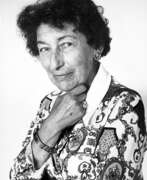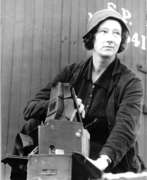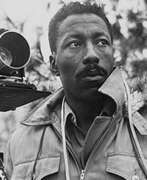Writers Reportage
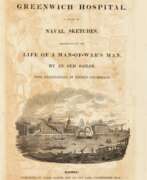

Matthew Henry Barker is a British writer, journalist and editor.
Barker is known by his pen name The old Sailor. As a young man he served in the Royal Navy and worked for the East India Company before commanding his own schooner and spending several months in captivity.
From 1825, Barker worked as an editor and author for several periodicals and wrote many fascinating accounts of the sea from his own rich experience. Many of these stories, popular at the time, were illustrated by the famous 19th-century artist George Cruikshank.
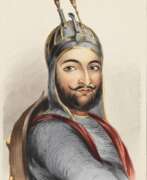

Charles Best or Carl Conrad Best was a German-born British army officer who served in the armies of the East India Company.
Best served for over seventeen years in the Hanoverian forces stationed in India and in the British colonial administration. In his notes, published in 1807, he describes parts of India, including a description of Madras. The work also covers the East Indies, the Cape of Good Hope, and St. Helena, and is illustrated with landscapes and inhabitants of these places. The author also writes about the Hindu and Muslim religions, cults and customs, temples and mosques.
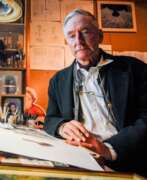

Raymond Redvers Briggs was a British writer, illustrator, and cartoonist.
A professional illustrator, he worked on the design of children's books. In the 1960s, Briggs discovered his talent and ability to combine words and pictures, using a form of strip cartooning that defined his later work.
Briggs is best known for his wordless book The Snowman, published in 1978, a sort of cute children's tale but with deep meaning. The animated and musical versions of this book are popular in Britain and are shown annually at Christmas.
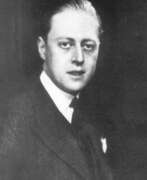

Robert Byron was a British traveler, writer, historian and art historian.
Byron studied at Merton College (Oxford), in his final year of university he traveled to Greece and described it in the book "Europe in the looking glass" (1926). The work "Station. Athos, Treasures and People" (1928) focuses on the monasteries of Mount Athos, and "Byzantine Achievements" (1929) on classical Greek culture, Byzantine art and architecture. Byron's other publications include Essays on India (1931) and First Russia, Then Tibet (1933).
In the early 1930s, Robert Byron traveled extensively in India, Persia, Tibet, Russia, and elsewhere. His most famous work is The Road to Oxiana (1937), which was written after traveling from Italy to India and is devoted to researching the origins of Islamic architecture. The route took him through Palestine, Syria, and Iraq, after which Byron visited Kermanshah, Tehran, Tabriz, Mashad, Herat, Isfahan, Shiraz, Persepolis, Sultania, Mazare Sharif, Kabul, and others. This book is based on his diaries and combines erudition and fascination. An aesthete and architectural art historian, Byron described the region's great Islamic monuments in elegant, lexically rich prose. He also took his own photographs. This photographic archive is now in the Conway Library of the Courtauld Institute in London and is of great value.
Talented and versatile, full of strength Robert Byron died at the age of 36, when the ship on which he was traveling to Cairo as a special war correspondent, was hit by a German U-boat torpedo off the northern coast of Scotland.
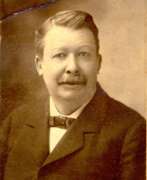

Joel Chandler Harris was an American journalist, Southern writer and folklorist, abolitionist, and author of Uncle Remus's Tales.
Joel was a very inquisitive and witty child, reading a great deal. From the age of 13 he worked as a typesetter and then as a reporter for several newspapers; in 1876 he became deputy editor at Atlanta Construction, where he worked for 24 years. As a journalist, Harris was an active abolitionist, advocating for black rights and against slavery.
At Atlanta Construction, Harris began publishing his now-famous Uncle Remus stories, using folklore he had heard from black workers on the plantation. These tales made Joel Harris famous and earned him a firm place in the classics of American literature. The general outline of the series of stories was simple: Uncle Remus, a wise and good-natured old black man, tells stories about Brother Rabbit, Brother Fox and other animals to the plantation owner's young son - through his prism of worldview.
Uncle Remus: His Songs and Sayings was first published in book form in 1880, and others followed. Harris also wrote six children's books set on a Georgia plantation, several novels and novellas.
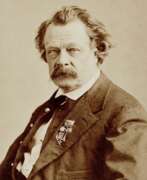

Edward Zane Carroll Judson Sr., known by his pen name Ned Buntline, is an American adventurer, journalist, and writer.
Edward Judson was characterized by hooligan antics from his youth, but always gravitated towards writing. He started to publish newspapers several times, but unsuccessfully, ran away from debts and shot in a duel because of his mistress, sat in prison for organizing a riot and became a successful scandalous reporter.
Judson invented a character named Buffalo Bill and wrote several novels featuring him. He also wrote a play, Scouts of the Plains (1872), based on his life. Judson also wrote hundreds of one-night novels and serials that were sensationalized stories of villainous heroes and violence. It was he who originated the so-called "dime novels" in the Western genre popular in the late nineteenth century.
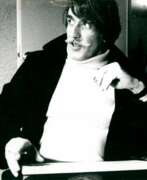

Magdalo Mussio is an Italian artist, animator, editor and writer.
In painting he created abstract landscapes and participated in many exhibitions in Italy. In the 1960s he worked as an editor for several Italian cultural publications. Mussio was also the creative artist of a number of animated films and published several books about his work.
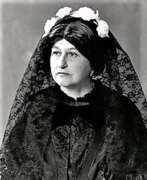

Anne Royall, née Newport, was an American writer, newspaper editor and traveler, one of the first women journalists in the United States.
After the death of her husband William Royall in 1813, Anne was left destitute, but she did not despair and completely changed her life. She was about 50 years old when she set out to travel the country and describe what she saw. She visited Baltimore, Philadelphia, New York City, Albany, Springfield, Hartford, Worcester, Boston, and New Haven. In each city, she asked respected citizens for interviews and subscriptions to her future books. She made detailed notes on each town's population, industry, physical description, local transportation, regional dialects, fashions, and the character of its inhabitants.
In all, Anne Royall wrote ten volumes of travel books. She was 57 years old when she published under a pseudonym her first book, The Traveler: Sketches of History, Life, and Manners in the United States (1826), which provides a unique look at American life in the early nineteenth century. His first novel, The Tennessean, was published in 1827, followed by several others.
At the age of 62, in her home in Washington, D.C., Royall began publishing her own newspaper, Paul Pry (1831-1836) and then The Huntress (1836-1854). She exposed bribery and corruption and made many powerful enemies. Nevertheless, it is known that the intrepid journalist during her life met and talked with every man who occupied the presidential chair, from George Washington to Abraham Lincoln.
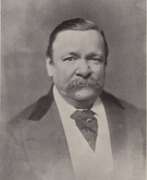

George Augustus Henry Fairfield Sala was a British writer and journalist.
The young George Sala received a so-called Bohemian education, different from the classical. He had many acquaintances in artistic circles, drew and wrote. Sala first demonstrated his talent as a reporter in Russia, where he was sent by Charles Dickens from his magazine "Home Hearth". He then wrote for the Illustrated London News and was best known for his articles and reports for The Daily Telegraph.
George Sala was one of the most colorful publicists of the 19th century. He loved puns and wordplay, often in several languages at once. During a fifty-year career in newspaper and periodical journalism, Sala traveled widely and reported from many parts of the world, including Algeria, Australia, New Zealand, America and several European countries.
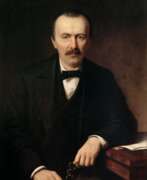

Heinrich Schliemann, full name Johann Ludwig Heinrich Julius Schliemann, was a German self-taught archaeologist, entrepreneur, and writer.
He conducted business in Russia and the United States, but at the age of 36, he realized his long-held dream and engaged in prehistoric archaeology. Schliemann traveled extensively in Greece, Italy, Scandinavia, Germany, France, and Syria before traveling around the world, visiting India, China, and Japan and writing a book about the latter two countries.
Schliemann became known for his archaeological excavations of the legendary Troy, Mycenae, and his books and publications on the findings were a success with the public. Critics, however, perceived his work in the field as unprofessional, believing that he did more damage to ancient artifacts than actually served the study of history.
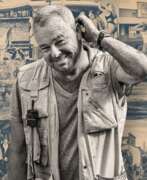

David Yarrow is a British photographer, conservationist and writer.
At the beginning of his career Yarrow photographed sports stars, at the age of only 20 he took the iconic picture of soccer player Diego Maradona, but then he found his niche. David Yarrow reinvented wildlife photography with his extraordinary patience and, most importantly, his reverence for it. Yarrow's black-and-white wildlife photographs with stars such as Cindy Crawford and Cara Delevingne have brought him ever-growing popularity among collectors. Today he is the best-selling photographic artist in the world.
Yarrow is also active in his charity work for the protection of wildlife.
